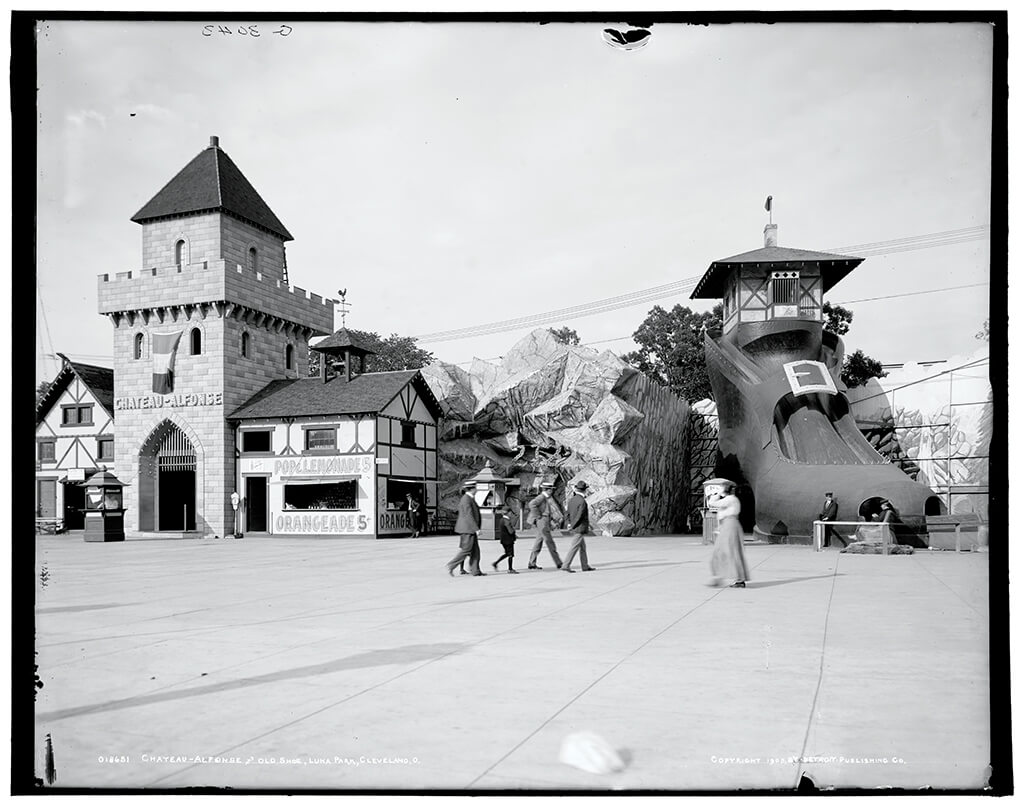Looking Back: Luna Park
Luna Park, located in the Woodland Hills neighborhood, was often referred to as Cleveland's "fairyland of pleasure."

The March 1905 edition of the SWP, a newsletter for dealers of Sherwin-William Paints, detailed a project nearing completion “at the beginning of the picturesque swelling hills through eastern Cleveland,” that was using Sherwin-Williams paint exclusively — and a lot of it.
It was an amusement park in Cleveland’s Woodland Hills neighborhood, one of two amusement parks opened that year by impresario Frederick Ingersoll. The other was in his hometown of Pittsburg (at the time, the city had dropped the familiar H at the end; it would return in 1911). Both would be known as Luna Park, festooned with thousands of lights and no shortage of attractions, including a funhouse called Chateau-Alfonse, a slide that looked like a woman’s shoe, a swimming pool and roller coasters.
Luna Park was also home to a stadium, called Luna Bowl, seating more than 20,000 people. Among those who played there were the Cleveland Tigers, a Negro League baseball team; multiple soccer teams and several early pro football teams, attracting such visiting gridiron stars as Benny Friedman, Ernie Nevers and the “Galloping Ghost” himself, Red Grange.
Ingersoll, who developed coin-operated games and designed roller coasters, at one point owned 44 amusement parks, all with the name Luna Park. In fact, in some languages, the word for amusement park is “Lunapark.”
Ingersoll sold the Cleveland park to local construction magnate Matthew Bramley in 1910. The following year, Ingersoll filed for bankruptcy. The New York Times said his assets were three suits, worth $75, and $179,668.84 in liabilities.
The park continued its innovations, including a wave machine in the pool in 1920. Ultimately, it closed in 1929, done in by declining attendance due to a variety of factors, chief among them being the lack of alcohol sales due to prohibition. But Luna Park had outlived its founder. Ingersoll died in 1927 in Omaha, Nebraska, in an apparent suicide.
The park was sold at a sheriff’s sale in 1931, with much of it being razed shortly afterward. The last vestige, the roller rink, burned in a 1938 fire that injured nine firefighters (Fire Capt. Roy Haylor died of a heart attack at the scene as well). Today, it’s the site of the Woodhill Homes.
Story:
Vince Guerrieri
2022 May/June






